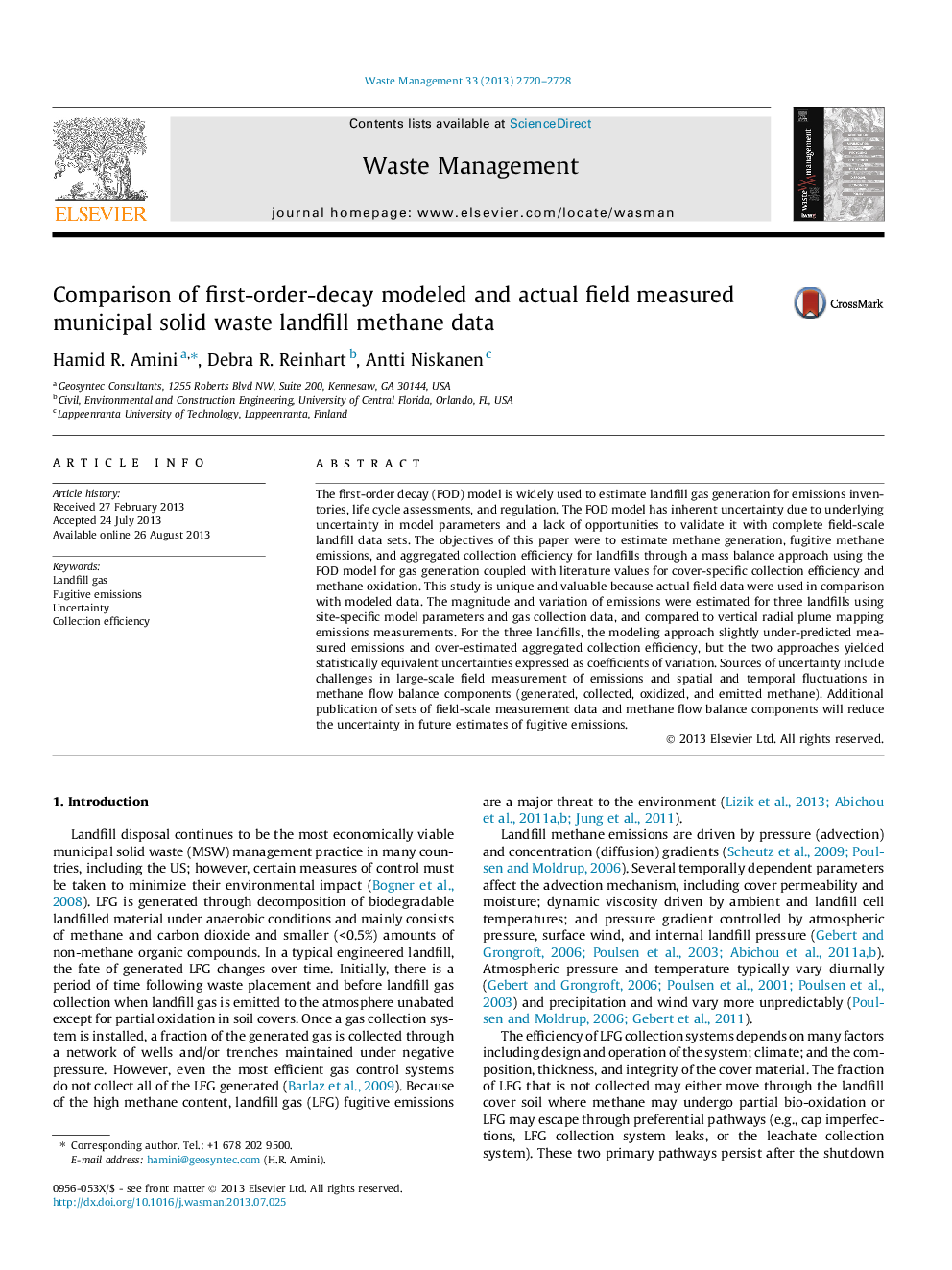| Article ID | Journal | Published Year | Pages | File Type |
|---|---|---|---|---|
| 6355262 | Waste Management | 2013 | 9 Pages |
Abstract
The first-order decay (FOD) model is widely used to estimate landfill gas generation for emissions inventories, life cycle assessments, and regulation. The FOD model has inherent uncertainty due to underlying uncertainty in model parameters and a lack of opportunities to validate it with complete field-scale landfill data sets. The objectives of this paper were to estimate methane generation, fugitive methane emissions, and aggregated collection efficiency for landfills through a mass balance approach using the FOD model for gas generation coupled with literature values for cover-specific collection efficiency and methane oxidation. This study is unique and valuable because actual field data were used in comparison with modeled data. The magnitude and variation of emissions were estimated for three landfills using site-specific model parameters and gas collection data, and compared to vertical radial plume mapping emissions measurements. For the three landfills, the modeling approach slightly under-predicted measured emissions and over-estimated aggregated collection efficiency, but the two approaches yielded statistically equivalent uncertainties expressed as coefficients of variation. Sources of uncertainty include challenges in large-scale field measurement of emissions and spatial and temporal fluctuations in methane flow balance components (generated, collected, oxidized, and emitted methane). Additional publication of sets of field-scale measurement data and methane flow balance components will reduce the uncertainty in future estimates of fugitive emissions.
Related Topics
Physical Sciences and Engineering
Earth and Planetary Sciences
Geotechnical Engineering and Engineering Geology
Authors
Hamid R. Amini, Debra R. Reinhart, Antti Niskanen,
